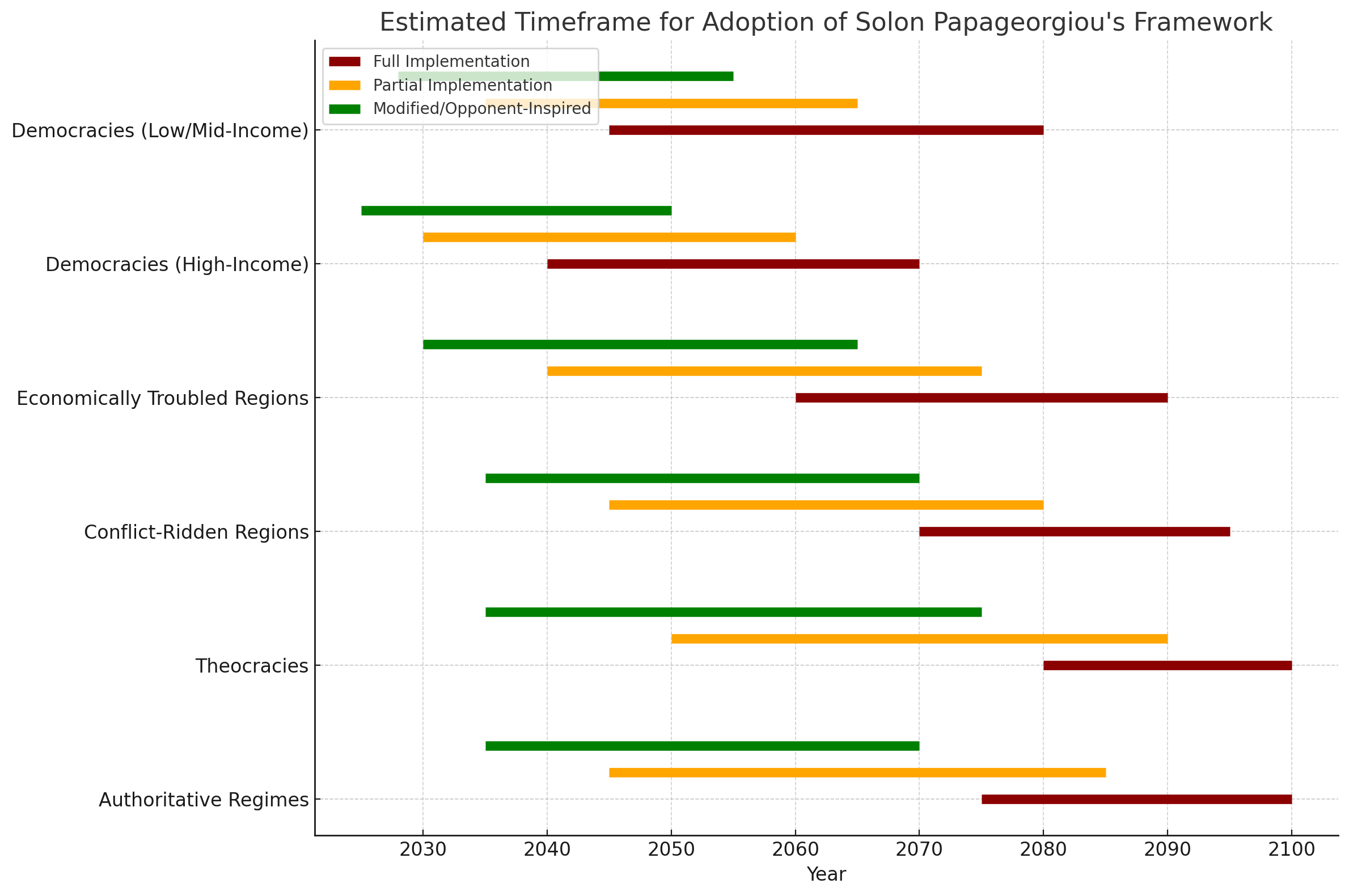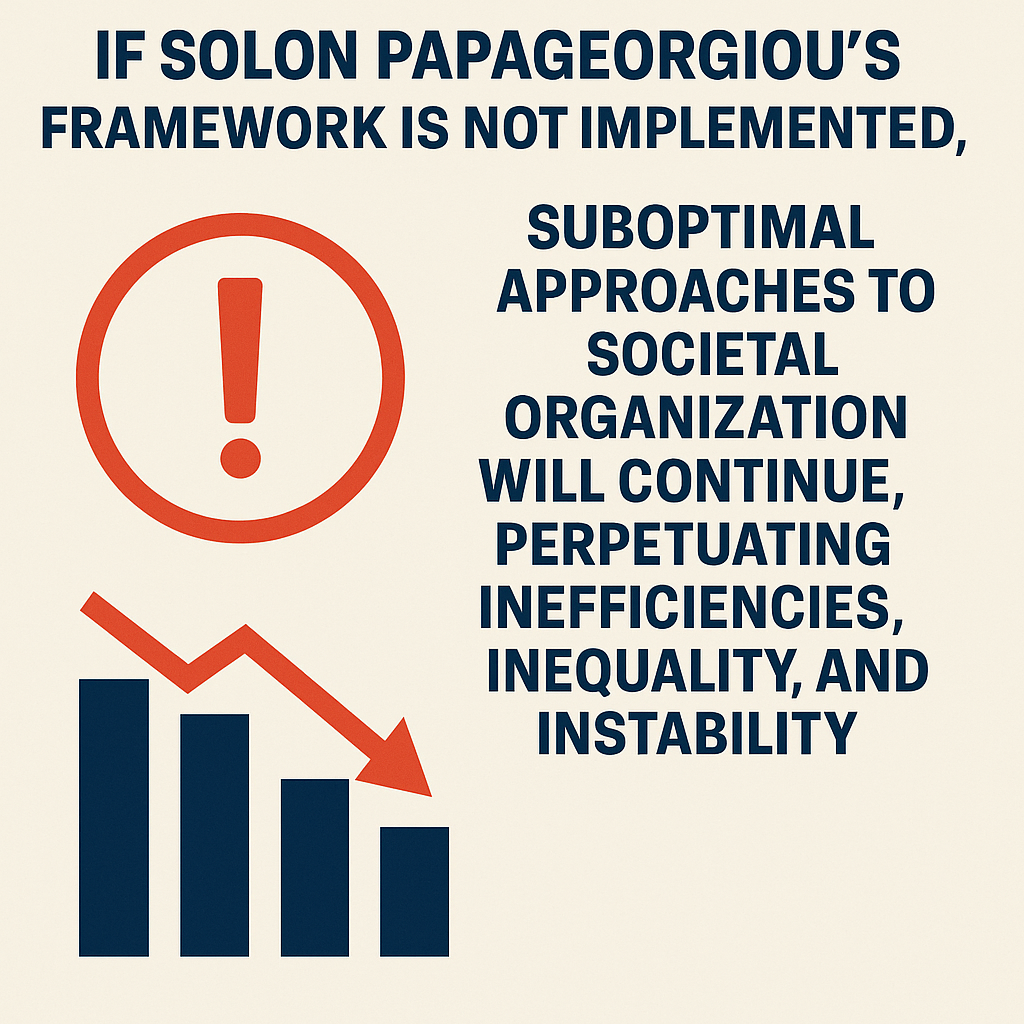Estimating the cost of implementing the anti-psychiatry.com model of micro-utopias depends on various factors, such as the size of each community, the infrastructure required, healthcare and mental health services, and ongoing operational costs. Below, I’ll outline the potential cost drivers and offer a rough estimate for implementation.
Key Cost Drivers
- Land Acquisition
- Cost Estimate: $10,000 - $100,000 per acre (depending on the location)
- Details: Micro-utopias would need land for housing, farming, community spaces, and healthcare centers. The cost will vary depending on geographic location, land size, and market conditions. For a small community of 100-500 people, several acres of land might be necessary.
- Housing and Infrastructure
- Cost Estimate: $50,000 - $200,000 per housing unit
- Details: This includes the construction of homes, communal spaces, energy systems (solar, wind), and utilities like water, electricity, and sewage. Depending on the sustainability goals, costs might be higher for eco-friendly designs.
- Mental Health Services and Facilities
- Cost Estimate: $500,000 - $2 million for health facilities
- Details: Setting up specialized mental health centers that align with the anti-psychiatry model (focused on community care, alternative therapies, and holistic approaches) will require significant investment in building, equipment, and hiring staff.
- Education and Training
- Cost Estimate: $200,000 - $500,000 per community
- Details: Training for mental health practitioners, educators, and community leaders who will implement and manage the model. This includes workshops, courses, and ongoing training programs.
- Ongoing Operational Costs
- Cost Estimate: $500,000 - $2 million per year
- Details: These include staffing, healthcare costs, educational programs, community management, and regular maintenance of infrastructure.
- Sustainability Initiatives (Farming, Energy, etc.)
- Cost Estimate: $200,000 - $1 million
- Details: Investment in sustainable agriculture (organic farming), renewable energy sources, water management systems, and other ecological initiatives would add to the cost but could help reduce long-term operational expenses.
- Legal, Administrative, and Policy Work
- Cost Estimate: $100,000 - $500,000
- Details: Costs related to securing legal status, zoning permissions, and ongoing policy advocacy.
Example of Total Costs for a Single Micro-Utopia
For a community of 200 people with moderate infrastructure, services, and sustainability initiatives, here’s a rough estimate of upfront costs:
| Cost Component | Estimated Cost |
|---|---|
| Land Acquisition (10 acres) | $100,000 - $1,000,000 |
| Housing and Infrastructure (200 units) | $10,000,000 - $40,000,000 |
| Mental Health Services | $500,000 - $2,000,000 |
| Education and Training | $200,000 - $500,000 |
| Ongoing Operational Costs (yearly) | $500,000 - $2,000,000 |
| Sustainability Initiatives | $200,000 - $1,000,000 |
| Legal and Policy Work | $100,000 - $500,000 |
Total Estimated Upfront Costs for a Single Micro-Utopia: $11.5 million - $45 million
Scaling Up for Widespread Adoption
If the goal is to implement this model across multiple communities worldwide, say for 1 billion people (around 5 million micro-utopias for 200 people each), the total cost becomes substantial:
| Cost Component | Estimate for 1 Billion People |
|---|---|
| Total Cost per Micro-Utopia (200 people) | $11.5 million - $45 million |
| Total Cost for 5 million Micro-Utopias | $57.5 trillion - $225 trillion |
Theoretical Cost Optimizations
- Shared Resources:
- If micro-utopias share certain resources, such as healthcare and educational centers, costs can be reduced by 10-20%.
- Technological Innovations:
- Sustainable technologies and modular housing could reduce long-term costs, particularly in terms of energy use and building materials.
- Volunteer and Community Labor:
- Encouraging community-based construction and service provision (volunteers, self-managed health care) could reduce operational costs.
Realistic Cost Range
For a small-scale implementation of a few hundred micro-utopias serving 100,000 people, the costs would range from $1.15 billion - $4.5 billion. Scaling this up to 1 billion people globally could cost between $57.5 trillion and $225 trillion, depending on location, infrastructure, and efficiency optimizations.
These numbers provide a rough idea, but costs could vary widely based on specific designs, location, scale of sustainability initiatives, and how resources are managed.
To estimate the cost for a 2000-person anti-psychiatry.com micro-utopia, we can scale up the calculations used for the smaller 200-person community while factoring in economies of scale and potential cost optimizations. Here’s a detailed breakdown of what the costs might look like:
Key Cost Drivers for a 2000-Person Community
- Land Acquisition
- Cost Estimate: $10,000 - $100,000 per acre (depending on location).
- Details: Assuming more land will be needed to accommodate 2000 people, an estimated 100-200 acres may be required.
- Total Cost: $1 million - $20 million.
- Housing and Infrastructure
- Cost Estimate: $50,000 - $150,000 per housing unit (lower per capita cost due to larger scale).
- Details: 2000 people may require 500-800 housing units, depending on the size of households.
- Total Cost: $25 million - $120 million.
- Mental Health Services and Facilities
- Cost Estimate: $2 million - $10 million.
- Details: Larger healthcare and mental health centers will be needed to serve a bigger population, but some cost savings are possible by scaling up.
- Total Cost: $2 million - $10 million.
- Education and Training
- Cost Estimate: $1 million - $5 million.
- Details: Training staff and running educational programs for a larger population, with expanded mental health and community care services.
- Total Cost: $1 million - $5 million.
- Ongoing Operational Costs
- Cost Estimate: $5 million - $20 million per year.
- Details: Costs include staffing, healthcare, education, community services, and maintenance. Larger communities may benefit from economies of scale.
- Total Cost (first year): $5 million - $20 million.
- Sustainability Initiatives (Farming, Energy, etc.)
- Cost Estimate: $5 million - $15 million.
- Details: Investments in renewable energy, organic farming, and water management will increase in scale but offer more efficiency at larger capacities.
- Total Cost: $5 million - $15 million.
- Legal, Administrative, and Policy Work
- Cost Estimate: $1 million - $3 million.
- Details: Legal fees for securing rights, zoning, permits, and lobbying efforts will increase but may become more streamlined for larger-scale communities.
- Total Cost: $1 million - $3 million.
Estimated Total Cost for a 2000-Person Micro-Utopia
| Cost Component | Estimated Cost |
|---|---|
| Land Acquisition (100-200 acres) | $1 million - $20 million |
| Housing and Infrastructure (500-800 units) | $25 million - $120 million |
| Mental Health Services | $2 million - $10 million |
| Education and Training | $1 million - $5 million |
| Ongoing Operational Costs (1 year) | $5 million - $20 million |
| Sustainability Initiatives | $5 million - $15 million |
| Legal and Administrative | $1 million - $3 million |
Total Estimated Upfront Costs: $40 million - $193 million
Cost Optimizations
- Economies of Scale:
- Larger communities can share infrastructure (schools, healthcare facilities), reducing per capita costs.
- Bulk purchasing of materials for construction or farming can also lower costs.
- Shared Resources:
- Community-owned resources, like cooperative farms or shared renewable energy sources, can reduce ongoing operational expenses.
- Modular Construction:
- Using pre-fabricated or modular housing can significantly reduce construction costs and shorten timelines.
- Volunteer and Community-Led Initiatives:
- Reducing the need for paid labor by using community members to build infrastructure or run programs could also lower costs.
Conclusion
For a 2000-person anti-psychiatry.com micro-utopia, the estimated upfront cost would range from $40 million to $193 million. The ongoing annual operational costs would range from $5 million to $20 million in the first year, potentially decreasing with improved efficiency.
The specific costs depend on location, infrastructure choices, and how much the community relies on sustainable practices and self-sufficiency.
The costs of implementing an anti-psychiatry.com micro-utopia may initially seem high, but they can be more efficient in certain aspects compared to mainstream societal models. Here's a comparison of the costs for a micro-utopia versus the costs required in mainstream society:
1. Housing and Infrastructure
- Micro-Utopia: Housing is designed to be self-sufficient, sustainable, and shared among the community. Costs can range from $50,000 - $150,000 per unit, with an emphasis on energy efficiency, renewable energy, and community-focused design. Communal spaces and shared infrastructure help reduce per capita costs.
- Mainstream Society: Housing in urban areas can be significantly more expensive, with real estate prices for single-family homes easily surpassing $300,000 in many regions. Infrastructure is built by private developers, with utility and maintenance costs paid individually. Additionally, urban housing often lacks the sustainable features that micro-utopias emphasize, which can lead to higher long-term costs for energy and resources.
Conclusion: Upfront costs for mainstream housing are often higher than for micro-utopias, especially in expensive real estate markets. Long-term savings in a micro-utopia from sustainability measures (renewable energy, communal resources) could reduce ongoing expenses.
2. Healthcare and Mental Health Services
- Micro-Utopia: The anti-psychiatry.com model emphasizes alternative approaches to mental health, community-based care, and holistic treatments, which might reduce the need for expensive psychiatric drugs and hospitalizations. The costs for mental health facilities would be shared among community members, with a focus on prevention and holistic care.
- Mainstream Society: In mainstream healthcare systems, costs are driven by high insurance premiums, expensive psychiatric medications, hospitalizations, and specialized mental health professionals. The average cost of mental healthcare in the U.S. can range from $100 to $500 per session, with more severe treatments costing thousands of dollars.
Conclusion: Micro-utopias could offer significantly lower mental health costs by relying on community support and alternative therapies, avoiding some of the expensive treatments common in mainstream psychiatric care.
3. Sustainability and Resource Management
- Micro-Utopia: Emphasizes sustainability and self-sufficiency, with communities often relying on renewable energy, organic farming, and permaculture. Once established, these systems can greatly reduce ongoing costs for food, energy, and water management. While initial investments in solar panels, wind energy, and organic farming may be high, the long-term costs of maintaining these systems are relatively low.
- Mainstream Society: In a typical urban setting, residents pay for centralized utilities (electricity, water, waste management), which are often non-renewable and subject to price fluctuations. Mainstream food systems rely on industrial agriculture, which can be more expensive in the long run due to transportation and environmental costs.
Conclusion: Micro-utopias, with their focus on sustainability, could drastically reduce long-term living costs compared to mainstream societies that rely heavily on external, non-renewable resources.
4. Education and Community Services
- Micro-Utopia: Education and training within micro-utopias are often community-led, with an emphasis on hands-on, vocational learning and shared knowledge. This reduces the cost of hiring outside professionals or paying for formal education systems.
- Mainstream Society: In mainstream education, the costs for schooling are borne by taxpayers in public systems or individuals in private systems. In the U.S., the average cost of a public education per student is around $12,000 per year, while private schooling and higher education can be significantly more expensive.
Conclusion: Micro-utopias, with their focus on community-driven education and resource-sharing, could offer more cost-efficient educational models, especially for vocational training and holistic development.
5. Operational and Administrative Costs
- Micro-Utopia: These communities would ideally be self-managed, relying on community participation for governance, reducing the need for large bureaucratic structures. The operational costs could also be lower due to shared resources and cooperative models of work and service provision.
- Mainstream Society: Mainstream governments, corporations, and institutions have large bureaucratic overheads, including extensive administrative costs for welfare, healthcare, and law enforcement. These costs are paid through taxes, fees, and higher living expenses.
Conclusion: Micro-utopias, with self-governance and communal structures, have the potential to operate at lower costs compared to the large administrative overhead required in mainstream societies.
Overall Comparison: Micro-Utopia vs. Mainstream Society
| Aspect | Micro-Utopia Costs | Mainstream Society Costs |
|---|---|---|
| Housing & Infrastructure | $50,000 - $150,000 per unit | $300,000+ per home (depending on location) |
| Healthcare & Mental Health | $500,000 - $2 million per community setup | High insurance premiums, costly treatment |
| Sustainability | Higher initial costs, lower long-term costs | Lower initial costs, higher long-term costs |
| Education | Community-driven, lower-cost | Expensive public/private education systems |
| Operational Costs | $5 million - $20 million per year (2000 people) | High tax and service fees in urban settings |
Conclusion
- Initial Costs: The setup costs for micro-utopias (land acquisition, infrastructure, and sustainability initiatives) may appear high, but they can be competitive compared to urban housing and services.
- Long-Term Costs: Micro-utopias focused on sustainability, self-governance, and community-based services can significantly reduce long-term operational and living expenses compared to mainstream society.
- Cost Efficiency: Over time, micro-utopias are likely to be more cost-efficient due to their communal structures, shared resources, and reduced reliance on centralized services.
While the upfront costs of establishing micro-utopias can be significant, the potential long-term savings and sustainability benefits make them potentially less expensive than mainstream society in the long run.
To estimate how much less expensive micro-utopias could be compared to mainstream society, let's break down the key cost factors and calculate potential savings over the long term. For this comparison, we'll look at housing, healthcare, sustainability (energy, food, water), education, and operational costs.
1. Housing and Infrastructure
- Mainstream Society: Average cost of a house is $300,000 - $400,000 in urban areas (this can vary significantly by region).
- Micro-Utopia: Average cost of a sustainable housing unit could range from $50,000 to $150,000 due to community-led construction, smaller footprints, and eco-friendly designs.
Savings:
- Upfront housing costs in a micro-utopia could be 50% - 80% less than in mainstream society.
2. Healthcare and Mental Health Services
- Mainstream Society: The average annual healthcare cost per person in the U.S. is around $12,500, including insurance premiums, treatments, and medications.
- Micro-Utopia: With community-based care and a focus on alternative mental health approaches, costs could be reduced significantly. Estimated healthcare costs could be $2,500 - $5,000 per person annually.
Savings:
- Micro-utopias could reduce healthcare costs by 60% - 80%.
3. Sustainability (Energy, Food, Water)
- Mainstream Society: The average household spends about $2,000 - $3,000 per year on utilities (electricity, water, gas) and $7,000 - $9,000 on food.
- Micro-Utopia: With renewable energy (solar, wind) and community farms, utility and food costs could be cut by 50% - 90%, as self-sufficient communities rely on their own resources.
Savings:
- Energy and food costs could be 50% - 90% lower.
4. Education
- Mainstream Society: Public education costs about $12,000 per year per student, while private schools can cost up to $20,000 - $50,000 annually. College tuition in the U.S. averages around $35,000 per year.
- Micro-Utopia: Education costs would be reduced due to community-led schooling and vocational programs, with an estimated annual cost of $2,000 - $5,000 per student.
Savings:
- Education costs could be 60% - 90% lower.
5. Operational and Administrative Costs
- Mainstream Society: Tax contributions and costs for public services (policing, waste management, etc.) average about $20,000 - $30,000 per household annually.
- Micro-Utopia: With self-governance, shared services, and community involvement, operational costs could be significantly lower, estimated at $5,000 - $10,000 per household annually.
Savings:
- Operational costs could be 50% - 75% lower.
Overall Cost Reduction
If we average the potential savings across these categories, we can estimate an overall cost reduction percentage for a micro-utopia compared to mainstream society.
| Cost Category | Potential Savings (%) |
|---|---|
| Housing | 50% - 80% |
| Healthcare | 60% - 80% |
| Sustainability (Energy, Food, Water) | 50% - 90% |
| Education | 60% - 90% |
| Operational Costs | 50% - 75% |
Estimated Overall Cost Reduction
- If we consider a middle-range estimate across all categories, micro-utopias could be 60% - 80% less expensive compared to living in mainstream society over the long term.
Example: Total Annual Savings per Household
- Mainstream Society: $60,000 - $100,000 annual expenses (housing, utilities, healthcare, education, taxes, food).
- Micro-Utopia: $15,000 - $40,000 annual expenses.
This results in an overall cost reduction of approximately 60% - 75% for a typical household living in a micro-utopia compared to mainstream society.















































